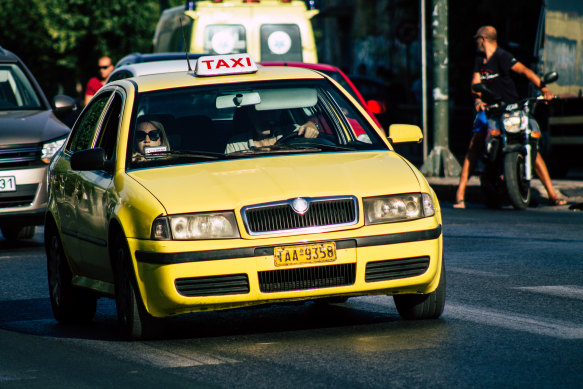Cash is dead? Try telling a taxi driver when you’re overseas
I’m paying for our lunch in Matera, in southern Italy, and the cashier is holding the eftpos terminal out to me, primed for payment. “That’s €34. Oh you’ve got cash? Ok, make it €30.” We part good friends.
A couple of days later I need to buy a shirt to compensate for various overindulgences. “Sconto?” (discount) – I say when it comes time to pay. “You have cash?” asks la donna behind the counter. No problem, and €10 ($16.70) is shaved off the sticker price.

Pay for a taxi in Greece or Turkey using a card? You must be joking.Credit: iStock
Much is made of cashless payments for travellers. Cards and digital wallets are super convenient. They allow you to walk around cash-free and that offsets the risk that comes with cold, hard cash. If you lose the card you use for contactless payments, you can cancel it straight away if you have the app for the card on your phone.
But there are still plenty of places where only cash will do. Pay for a taxi in Greece or Turkey using a card? You must be joking. Same goes for taxi drivers in most of Germany. You might get away with a card payment for a taxi ride in Paris, Rome and Milan, but not in most other parts of Italy and rural France.
A restaurant meal in Japan? A card will probably do in the major cities, but better have cash as a backup, just in case. Contactless payments are the go in Dubai, Abu Dhabi and Qatar, but in more traditionally minded countries in the Middle East, cash, please.
Even in the USA, contactless payments are nowhere near as universally accepted as they are here. For tipping, it’s strictly cash.
Another consideration if I pay using a contactless payment system, with every payment, a morsel of my money lands in the pocket of a financial institution. Since it’s a percentage, the higher the bill, the greater the loss.
I’ll also pay a fee when I withdraw my cash from an ATM, but it’s a fixed amount, not a percentage. As long as I withdraw a sizeable amount, the loss is negligible.
Sign up for the Traveller newsletter
The latest travel news, tips and inspiration delivered to your inbox. Sign up now.